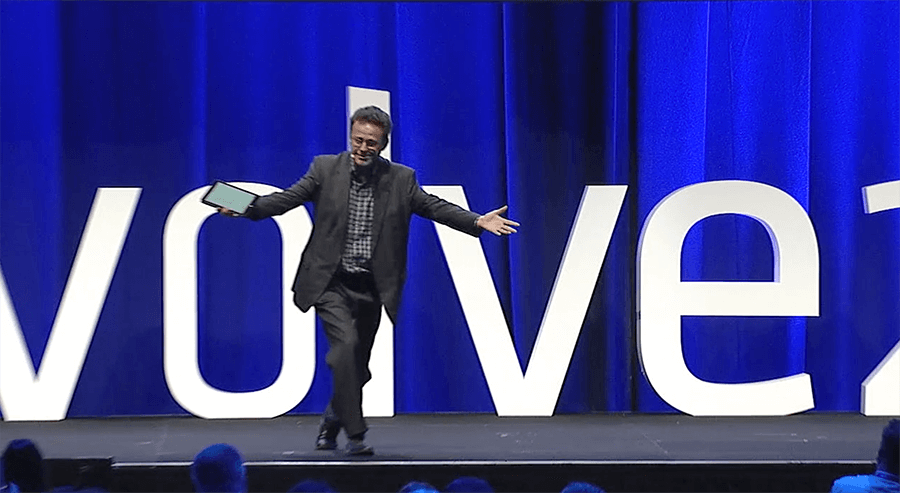
I’ve been helping large — mostly commercial — organisations to change for the better for over three decades. Most of the work boils down to helping leadership teams truly engage their organisations with the who, when, where, how and why of “what comes next?”. And this usually happens most efficiently and effectively in meetings. Big meetings.
Is your big meeting nothing but a big headache, so far?
While I’d love to say that leaders usually bring me work because they can’t wait to see me again, in truth most come to me in the first instance because they have a headache looming large. Most of the headaches can be categorised under two broad headings (not “paracetamol” and “ibuprofen”), and your current headaches are probably similar to the headaches I’ve seen many, many times: Strategy, and Culture. Often, the cause of the headaches is a lack of simple answers to some basic questions:
- What do we need to tell them?
- How do we make it interesting?
- Who do we put on stage, and what do they need to say?
- What if our audience gets negative — or starts negative?
- What if it’s boring?
But big meetings can also generate big headaches, because many clients are already worrying about past experiences that haunt them:
- this team has heard it all before and haven’t responded as we’d like
- they’re not going to like what we need to tell them this time
- they don’t get along with each other (factions / silos / introverts “vs” extroverts, etc. etc.)
- we’re too busy to put it all together (this one is easily fixed!)
- our leaders are scared of our people
- we don’t know how to make it interactive
- when we asked for questions, there was silence…
- nothing changed last time; it was all talk and no action
- my boss didn’t think it worked
- we’re told we need a big meeting, but we don’t really want one
- there’s just no sense of urgency, and we’ve tried to create one before…
The outcome you’re looking for
Fortunately, we all do know what a successful outcome looks like: People behaving differently as a result of being at the meeting. More positively and more proactively. Why behaving differently? Because they understand the organisation’s direction better. They trust their leaders a little more. They’ve made good social connections with others in the organisation. And they’ve refined their own understanding about what they need to do next.
And how did this occur? At the meeting, everyone gave and listened to feedback in a dynamic, interesting and supportive environment. They built social bonds while discussing what they know about their organisation’s exciting challenges and opportunities. And they committed to actions that they did follow through.
And why (and how) did it work? Science! The meeting was designed to maximise its chances of success, by interrogating the economics of the industry, and being sympathetic to the psychological forces acting on the employees.
What I bring to your meetings…
I bring detailed understanding of both economic and psychological sciences to my clients’ meetings (you can read about my unusual career path here), along with 30 years of experience in getting real results (client testimonials here).
Essentially, a good, big meeting needs elements like these:
- genuine, positive social engagement
- lots of interaction
- cogent, potent updates
- good questions
- lots of discussion and feedback
- …more positive social engagement
- variety: presenters, discussions, activities
- laughter
- rigorous interrogation
- good food
- commitment to follow-up actions, and to new rituals
And I bring to you a deep and rich knowledge about how to make such elements work for you and your teams. I am always happy to discuss your headaches without obligation and to make quick suggestions about how I might be able to help — for your consideration.
Please keep these points of difference in mind:
- When I’m designing your meeting, I’m looking at it from the point of view of psychological and economic science: how do we maximise the chances of achieving the outcomes you want?
- When I’m facilitating your meeting, I’m fine tuning your messages on the fly and at the coalface, mixing up the pertinent information (that I’ve researched with you) and key organisational calls-to-action (from the leadership team), while actively managing the energy, mindsets and social interactions of your participants. (When others are MCing, they’re usually just MCing.) I allow your own leaders to relax, and to shine in turns.
While every design is different, and depends on the specifics of your own leadership team’s challenges, there are some simple processes that I can introduce you to, to help get you feeling better about your challenges very quickly — addressing your bosses’ headaches, and yours.
Every piece of work that I do starts with a cuppa, or a walk, or a phone-call. I encourage you to please get in touch with me. If your next big meeting is going to be a success, it helps to talk sooner, rather than later. The sooner you call, the more I can help.